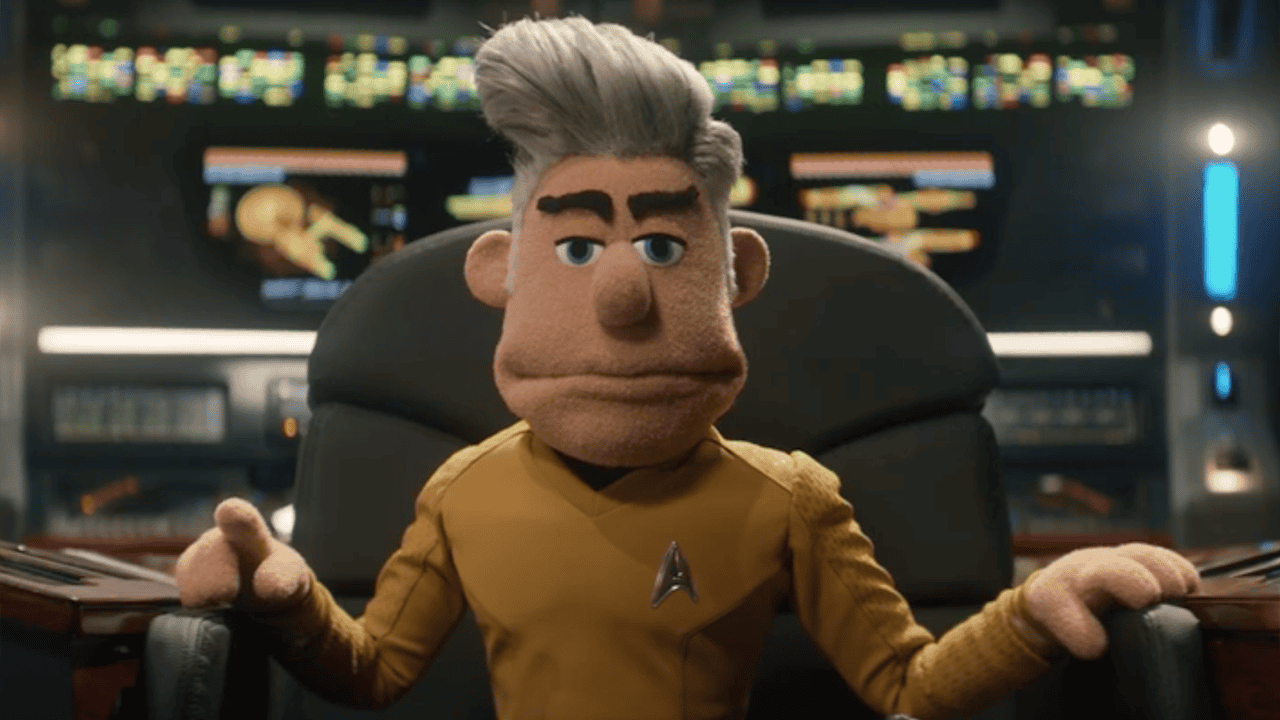By Joshua Tyler
| Published

Modern entertainment has only two tones. There used to be more nuance, but now we live in a two-tone entertainment world.
If you want proof, look no further than the third season of Star Trek: Strange New Worlds. These were the season’s first four episodes…
- Episode 1: A darker and edgier version of Star Trek: The Next Generation’s “The Best Of Both Worlds.
- Episode 2: A sillier and campier version of the Star Trek original series episode “The Squire of Gothos.”
- Episode 3: A dark and edgy standard zombie horror story.
- Episode 4: A sillier version of Star Trek: The Next Generation’s Dixon Hill holodeck episodes.
You probably read those descriptions and assumed that lack of creativity is the problem, since all four episodes are basically retreads of ideas we’ve already seen on Star Trek or in other things. That is a problem, but there’s an even bigger one: tone.
Each week, the show shifts wildly between one of two extreme tones: either Gorn babies are eating people from the inside out, or there’s a musical number on the bridge. There’s nothing in between.


What’s worse is that neither tone fits Star Trek, which used to be a serious, thoughtful show with some light moments. It was that way EVERY WEEK. It wasn’t a horror show one week and an all-puppet SNL parody of itself the next (something that is actually coming in season 4).
There used to be this middle ground, and it was in this middle ground that all the best stories were told. They were told in that way because a more serious yet light middle tone is something your audience can connect with. That vibe is the vibe of real life.
Klingon boy bands do not have the vibe of real life. They’re just spectacles. So are zombies and wacky wedding fantasies and pretty much everything Star Trek: Strange New Worlds is doing, on either end of the two very childish spectrums it operates in.

Star Trek isn’t the only property with this problem. It’s been killing Marvel, too, which has become so lost in meta-silliness that people stopped paying attention or alternatively buried in gritty stories about gangsters no one cares about.
That’s why The Fantastic Four has been getting so much positive attention, whether people realize it or not. Tonally, it exists in that middle ground of serious but not serious. It pulls that off while delivering a campy ’50s retro vibe, which is quite an accomplishment. That could easily have spun off into a high school drama club tribute to John Waters, but it never does.

If you’re wondering why this is happening, it’s pretty obvious: it’s easier to write two-dimensional cartoons than stories that connect with people on a deeper level. Hollywood has a serious writing talent problem.
When your writers are hacks, they can’t do nuance. Instead, they paper over their lack of creativity by pushing existing stories to wild extremes. It’s less obvious that you’re ripping off a PG TV episode like “The Best of Both Worlds” when there’s blood spraying all over the room.
Without good writing, you end up stuck in a world of two-tone entertainment. Until Hollywood goes back to hiring writers based on merit, nothing will change.
